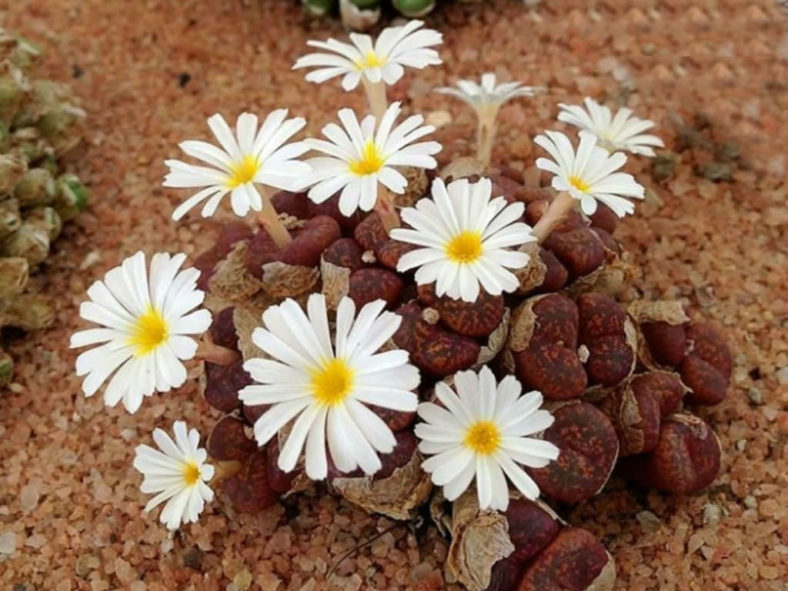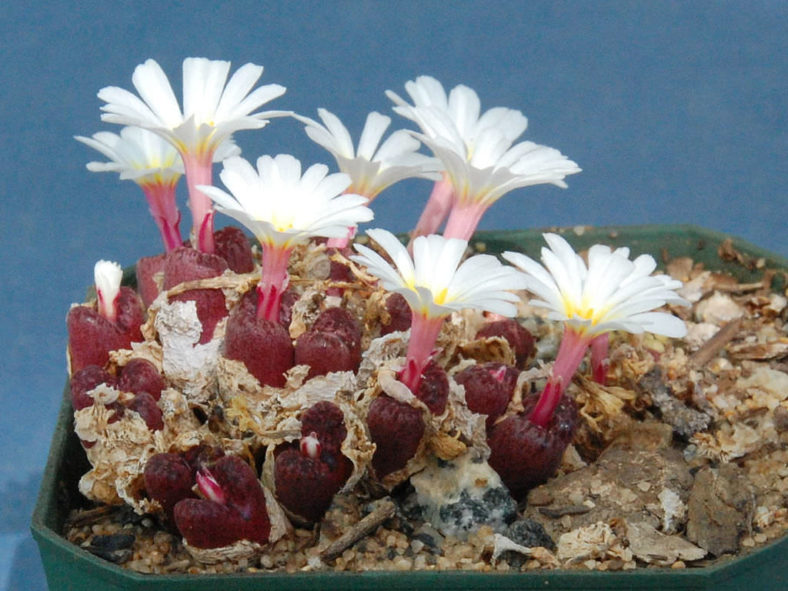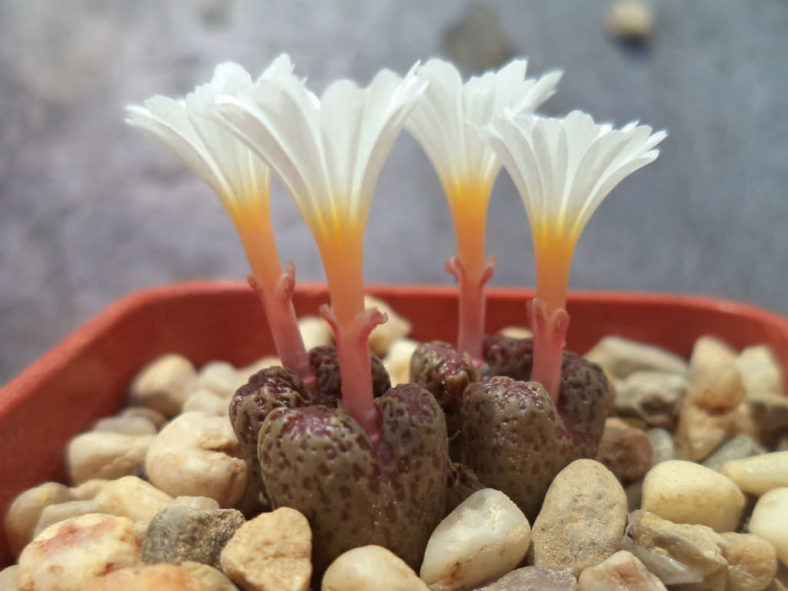Scientific Name
Conophytum pellucidum Schwantes
Synonym(s)
Mesembryanthemum pellucidum
Scientific Classification
Family: Aizoaceae
Subfamily: Ruschioideae
Tribe: Ruschieae
Genus: Conophytum
Etimology
The specific epithet "pellucidum" (pronounced "pel-LOO-sid-um") means "transparent, pellucid; very bright" and may refer to the distinct transparent area at the top of the leaf pairs.
Origin
Conophytum pellucidum is native to South Africa. It occurs in Steinkopf, Garies, Kamiesberg, and Rooifontein in the Northern Cape province, growing in crevices of gneiss slabs, on quartzite cliffs, slopes, or in rubble.
Description
Conophytum pellucidum is a dwarf succulent with cylindrical bodies composed of two fused, purplish brown to greyish brown leaves with a depressed central fissure. It slowly grows and forms a dense clump over time, which can reach a diameter of up to 3.2 inches (8 cm). The bodies can grow up to 0.8 inches (2 cm) tall and 0.5 inches (1.2 cm) in diameter. The upper surface often has a mottled pattern of opaque brownish islands or smudges.
The flowers are diurnal, long-tubed, with white or pink petals, rarely magenta, and filaments forming a yellow to cinnabar ring. They appear in late summer or fall.

Subspecies and Varieties of Conophytum pellucidum
- Conophytum pellucidum subsp. cupreatum
- Conophytum pellucidum subsp. pellucidum
- Conophytum pellucidum subsp. saueri
- Conophytum pellucidum var. lilianum
- Conophytum pellucidum var. neohallii
- Conophytum pellucidum var. terrestre
How to Grow and Care for Conophytum pellucidum
Hardiness: USDA hardiness zones 10b to 11b: from 35°F (1.7°C) to 50°F (10°C).
Most Conophytums require bright light but dislike intense sunlight. To avoid sunburn, place them in a position to receive a few hours of full sun in cooler periods of the day.
These plants thrive best in a porous growing medium that will drain quickly. Use a commercial mix specially designed for growing succulents, or make your own.
When Conophytums go dormant in the spring, they require little or no water. When plants begin growing in the fall, it is safe to water deeply, allowing the soil to dry before watering again.
Conophytums are light feeders and do not need fertilizer if repotted every two years. It is best to feed at the beginning of the growth period and just before flowering.
These succulents will benefit from repotting. Depending on the pot's size and growth rate, they typically need to be repotted every 2 to 4 years. The best time to repot a Conophytum is at the beginning of the growing season.
Conophytums are easily propagated by division. They can also be grown from seeds.
Learn more at How to Grow and Care for Conophytum.
Links
- Back to genus Conophytum
- Succupedia: Browse succulents by Scientific Name, Common Name, Genus, Family, USDA Hardiness Zone, Origin, or cacti by Genus
Photo Gallery
Click on a photo to see a larger version.

